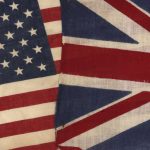Culture can be known as the social heritage of humans and it helps to distinguish one community from another. Any country has hereditary cultural aspects and its national and historical identity can be demonstrated to the world. People are always curious to know more about foreign lands, their people and culture. Culture is one of the most significant factors which attract tourists to a destination. Culture in terms of tourism gives the tourist an insight into the;
- Way of life or lifestyle of the people which one can experience;
- Dress, jewellers, dance, music, architecture, and painting and;
- Customs and beliefs, fairs and festivals, and the religion practised in the region.
Cultural tourism covers all those aspects of travel whereby people travel to learn about each other’s ways of life, beliefs and thoughts. Tourism is an important aspect for promoting cultural relations and international cooperation. The way a country represents itself to tourists can be considered as its cultural factors.
Cultural tourism includes widening one’s knowledge about other places and people, their ways of life, their cultures and includes journeys to sites of art and heredity treasures, religious shrines and other civilizations, interest in religion, philosophy, history and so forth to participate in cultural events such as art festivals and celebrations- music, theatre, dance, folklore and festivals.
In Sri Lanka, with the introduction of the Open Economic Policy by president J.R Jayewardene in 1977, a formal order was prepared for applying valuable cultural things for the tourism industry. The Sri Lankan Tourism Board has introduced seven tourists zones in the country as follows;
- Colombo city associated zone
- Greater Colombo associated zone
- South coastal zone
- East coastal zone
- Central highlands
- Old city zone
- North zone
These areas include Horton Plains, Sigiriya, Pasikudah, Kandy, Polonnaruwa, Anuradhapura, Trinkomale, Unawatuna, Hikkaduwa, Sinharaja, Udawalawe National; Park, Vilpaththu, Katharagama and many more. Out of the above zones, Colombo and Central Colombo suburbs are the major tourist attractions for seminars and business purposes. Apart from that, other parts of the country are more attracted to the beauty of the environment and the sights of historical shrines.
With the introduction of the central cultural fund in 1980, the Sri Lankan government directed to use cultural heritages to uplift tourism and the cultural triangle was formed based on old and ancient places such as Anuradhapura, Polonnaruwa and Kandy. Those world heritages which belong to the Cultural Triangle can be categorized as follows,
- Alive religious cities (Anuradapura, Polonnaruwa)
- Historical old cities (Polonnaruwa, Sigiriya)
- Old cave temples ( Rangiri Dambulla)
Further, considering the gigantic temples, ruins of structures in ancient cities, spectacular cave temples and wall paintings of beautiful maidens at the Sigiriya rock fortress, the ever famous Cultural Triangle is a place where travellers can marvel upon the World Heritage Sites within a small area.
The ancient cities of Anuradhapura and Polonnaruwa proudly display the archaeological legacy of Sri Lanka. The former royal empire, Kandy, is known as the cultural hub of the country. The city of Galle which is a major port of arrival, in a bygone era, houses some of the most prominent and fascinating colonial monuments of Sri Lanka. The excellent craftsmanship is portrayed in the spectacular wood carving, weaving, pottery and metalwork. Sri Lankan ves muhunu (masks) are hand made in the city of Ambalangoda, and these make for the perfect souvenir. Ratnapura is a town made famous by its exquisite gems.
Cultural Heritages Sites plays a significant part in the cultural tourism industry. Cultural Heritage is an expression of the ways of living developed by a community and passed on from generation to generation, including customs, practices, places, objects, artistic expressions and values. Cultural heritage is divided into two parts as follows;
- Tangible cultural heritage;
- Movable cultural heritage (paintings, sculptures, coins, manuscripts)
- Immovable cultural heritage (monuments, archaeological sites, and so forth)
- Under water cultural heritage (shipwrecks, underwater ruins and cities)
- Intangible cultural heritage; (oral traditions, performing arts, rituals, theatre, customs and beliefs and social habits and)
Even though Sri Lanka is a country with enormous cultural heritage Sites, the number of tourists who travel to Sri Lanka to visit religious and cultural sites is lacking. A large number of tourists come to Sri Lanka with the purpose of having pleasure and spending holidays. Unfortunately, the number of tourists for cultural tourism has decreased at present even though Sri Lanka is a culturally and religiously valuable Buddhist country. In 2013, 4.8% of tourists came to Sri Lanka for visiting cultural and religious places and when we look at the past ten years, it is the maximum number of tourists who travel to Sri Lanka for the religious and cultural section. In 2015 and 2016 years, the amount of tourists is 0.0%. Considering this situation in Sri Lanka, it is essential to actuate a formal plan to promote cultural tourism and to increase the number of tourists for the section of cultural tourism in Sri Lanka.
Bibliography
Secondary sources
- Bandara, Herath Madana, 2003, Tourism Planning in Sri Lanka, Malvana, R.S Printek Pvt Ltd.
- Compton, Burnett, 1959, A Heritage and its history,London.
- Mandis, Wasantha, A.M.N, 2019,Bauddha sanivedanaya,(edit),Saman printers.
- Franklin, Adrian, 2003, Tourism; An Introduction,Cornwall, Pasdstow,TJ International Ltd.
- Ganevaththa, Shyam Nuwan, 2014, Advancing Sri Lanka towards Tourism Economy, Shakya publications.
- Ganevaththa, Shyam Nuwan, 2015, Tourism in Sri Lanka, Shakya publications.
- Governance, heritage and sustainability, Wijayadasa, K. H. J., Nugegoda : Sarasavi, 2013.
- Gunn, Clare A, 2002, Tourism planning, United States of America
Dictionaries
- Hettiarachchi D.E,(1970),Sinhala encyclopedia, Colombo, Government press department.
- Malalasekara English Sinhala Dictionary, (2000)Colombo,M.D Gunasena and company.
- Monior monior Williams, (1981), Sanskrit English Dictionary, New Delhi.
Internet sources
- http://www.cultureindevelopment.nl/cultural-heritage/what-is-cultural-heritage
- https://lakpura.com/world-heritage-sites
- https://tourismnotes.com/travel-tourism/
- https://travel-center.medium.com/complete-guide-to-sri-lankas-culture-heritage-69e5b45908e5
- https://www.srilanka.com/world-heritage-sites
- https://www.srilanka.travel/travel-news
M.D. Sachini Hansika
Temporary Assistant Lecturer
Department of Pali and Buddhist Studies
University of Sri Jayewardenepura






